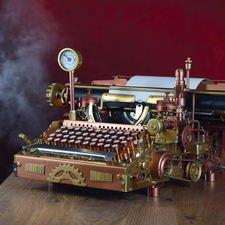Designing Keyboardio
The Making of a Keyboard

© Lead Image © 3355m, 123RF.com
Jessie Vincent, cofounder of Keyboardio, looks back at the process of designing an efficient and comfortable keyboard and some of the design decisions and challenges involved.
The Keyboardio [1] Model 01 is an open hardware success story (Figure 1). First shipped in late 2017, it has gone on to ship thousands of units, as well as developing a small but enthusiastic band of users and volunteer developers. However, this success did not come overnight. Besides the challenges that face a small and new manufacturer, the Model 01 also faced endless technical decisions about everything from the shape of the keyboard to the choice of LED switches and their position on the circuit board. Recently, Jesse Vincent, cofounder and CTO of Keyboardio, took the time to shed some light on the product development.
Ever since Vincent's first summer internship as a programmer, Vincent had found himself prone to repetitive stress injuries. "For quite a while," he remembers, "I carried a Microsoft Natural Elite keyboard in my backpack. I tended to go through three or four of them each year." Sometime in 2011 or 2012, "I discovered that there was an online community of folks who made their own keyboards. Somewhat naively, I figured I'd take a month and build myself a keyboard. Seven years later, my wife Kaia and I work full-time on keyboards."
Although keyboards remain the main device for computer input, their design has changed little in the last few decades. Although alternate keyboard layouts are available, the majority of keyboards continue to use the QWERTY layout, so-called from the left-hand top bank of keys.
[...]
Buy this article as PDF
(incl. VAT)
